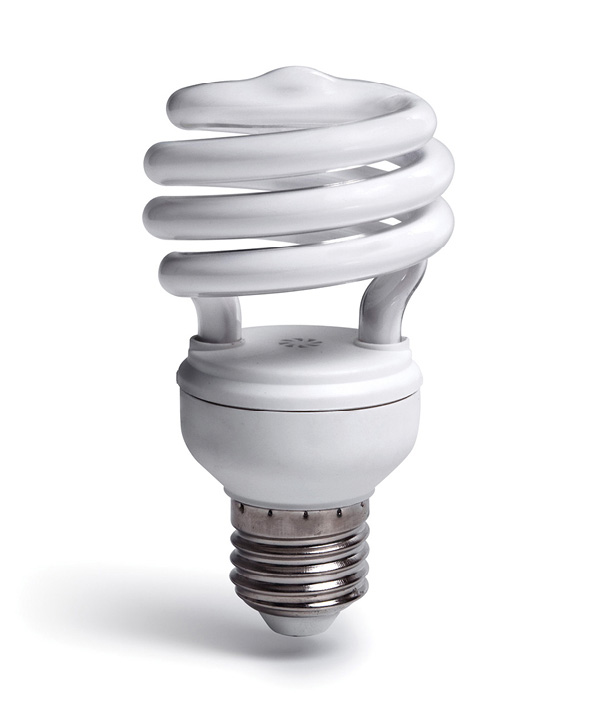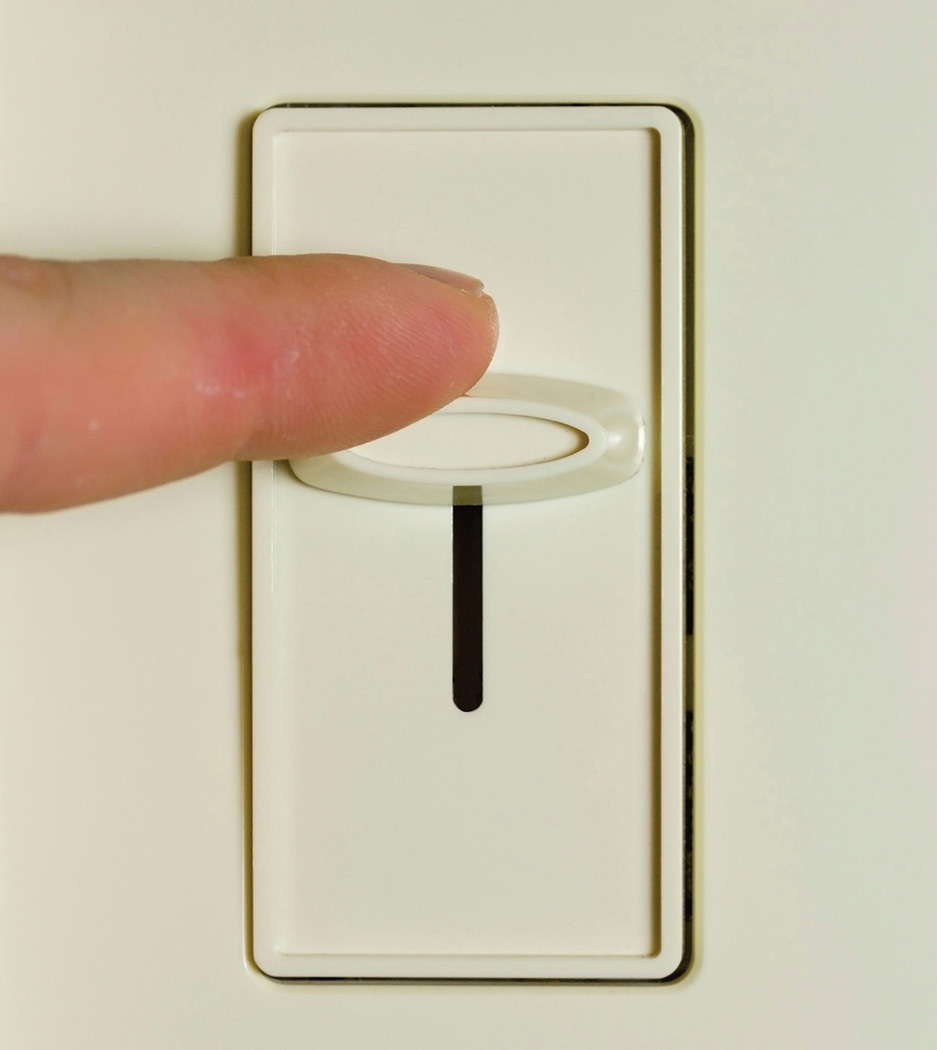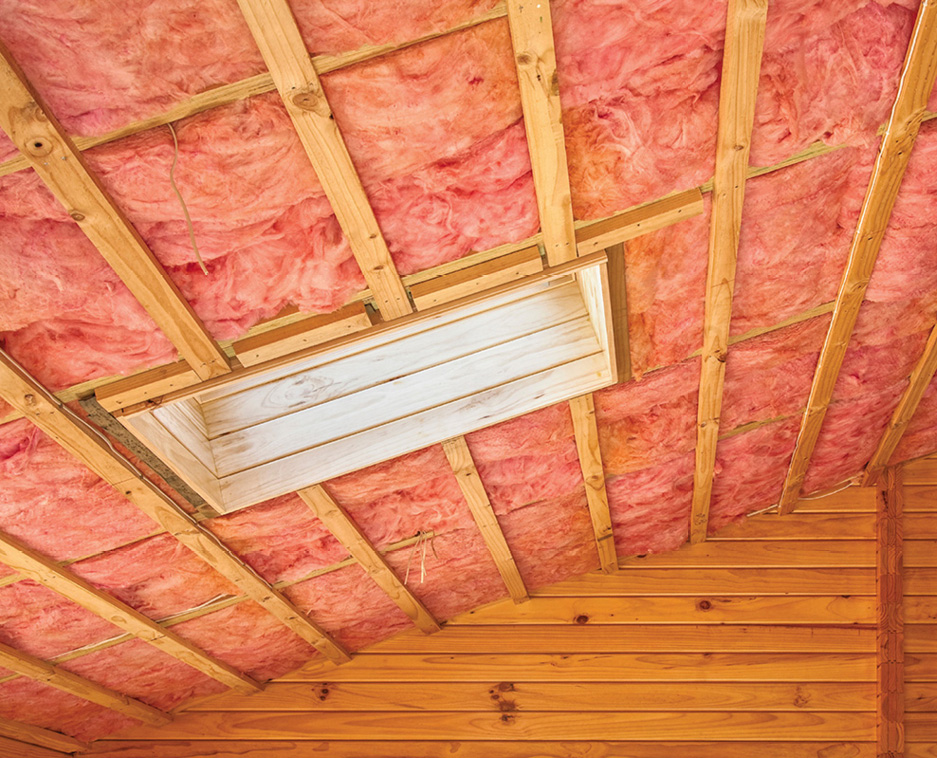

There can be huge benefits and savings if you install energy-efficient lights and appliances throughout your home before installing solar energy. By doing this you will save money and benefit in two distinct ways.
First, if you’re seriously looking at using solar energy in your home, you should know that by replacing existing energy-inefficient systems and appliances with newer, more efficient ones, and by being more conscientious with your electric consumption habits, you can substantially reduce your monthly electricity bills—often by as much as 40 percent. This, in turn, can reduce the size and overall capital cost of any PV solar energy system to be installed in the home by a similar percentage. Conservation will also make the investment in solar energy more effective and reduce your payback period.
You can draw up a useful electrical energy efficiency checklist, as follows:
Most homes have at least one or two refrigerators. If your model has a manufacture date (found on the name plate on the back of the unit) prior to 2002, chances are it’s one of the older, inefficient models, probably consuming about 500 to 750 watts per hour. These units should be traded in for a newer, quieter, more energy efficient model with a rating of 350 watts.
Newer models have additional advantages and new convenience features, such as automatic ice cube makers, auto defrost, useful interior designs, and attractive exterior designs with longer-lasting, more user-friendly door handles. Eventually, the monthly savings from the electric bills will pay for the cost of the new refrigerator.
In many parts of North America and Europe, and in all tropical countries, homes use unsightly window units. These are often older, noisy, and energy inefficient. If not maintained and cleaned properly, some older units will leak water inside the house—a truly annoying situation. By universal convention and industry standards, the power and electric consumption of air conditioners is indicated by the BTU (British Thermal Units) rating. A very small home may use a unit as small as 1,200 BTUs. In larger homes with large rooms, there may be several units as large as 36,000 BTUs. The earlier models—dating from eight to twelve years ago—tend to be inefficient and consume a lot of electricity.
If these older units are recycled and replaced with modern, high-efficiency ceiling units, the resultant savings to the monthly electric bills can be substantial. In addition, large open cracks or spaces around outside windows and doors can result in a lot of unnecessary losses and are easy to fix with rubber or foam-based door-and window-sealer strips.
Turning off the air conditioner when you leave the room can also reduce consumption. Even more savings can be achieved by switching from the air conditioner to a floor or wall fan at night, when the outside ambient air temperature goes down. Combining these recommendations can make for big reductions to the monthly electric bills, and the savings can be seen within a month or two of making the changes. If you’re designing a new home or doing a major renovation, and if the size of your home is large enough, then a modern, high-efficiency central air conditioning unit can be considered. These offer benefits including low electric consumption, even temperature control, less maintenance, and improved aesthetics.
ENERGY CONSUMPTION CALCULATION

The energy consumption “E” in kilowatt-hours (kWh) per day is equal to the power “P” in watts (W) times the number of usage hours per day “t” divided by 1000 watts per kilowatt:
E(kWh/day)=P(W) × t(h/day) / 1000(W/kW)
The older models of these appliances are generally not efficient, and their combined electricity consumption often comprises a sizeable portion of the monthly electric bill. Typical power consumption ratings are usually in the following ranges:
Electric Water Heaters: 4,000 to 5,000 watts
Electric Clothes Dryers: 3,000 to 4,000 watts
Electric Space Heaters: 2,000 to 2,500 watts
Adopting the formula for energy consumption calculation on the previous page, and using the lower end of the range for each appliance and a reasonable average household usage time, we get the following energy consumption levels:
Electric Water Heaters: 4,000 W × 3 / 1000 = 12 kWh/day = 4,380 kWh/yr
Electric Clothes Dryers: 3,000 W × 2.5 / 1000 = 7.5 kWh/day = 2,737.5 kWh/yr
Electric Space Heaters: 2,000 W × 8 / 1000 = 16 kWh/day = 5,840 kWh/yr
Total = 12,957.5 kWh/yr
If you pay $0.12/kWh for your electricity, this represents an annual cost of $1,555 per year.
Substantial savings can be achieved by recycling these electric appliances and converting to natural-gas appliances or, where natural gas lines are not available, using large residential propane tanks with small diameter copper tubing.
It is highly recommended to study the advantages of installing a solar rooftop water heating system instead of using traditional water heaters. Solar thermal water heating systems are the most efficient of all renewable energy systems. Their energy-conversion efficiency (sunlight to heat for hot water) is approximately 75 percent. Compare this to PV solar panels (converting sunlight into electricity) that typically have efficiency factors in the range of 18 percent to 21 percent. As a result, a solar thermal rooftop water-heating system has a very short payback period and will substantially reduce the size of the PV solar system needed for the same residence. The two systems are very compatible, assuming sufficient space is available for both. Usually only three or four hot water collector panels are sufficient for the average home.
Incandescent lighting uses those standard old-fashioned round light bulbs that burn your fingers and have to be replaced frequently. Incandescent lighting is still in widespread use around the world and is an extremely inefficient technology. These fixtures typically convert up to 86 percent to 92 percent of the electric input into heat (a huge loss) and only 8 percent to 14 percent into light. This is very wasteful and easy to remedy by replacing these incandescent fixtures with compact fluorescent lamps, commonly referred to as “CFLs,” or—even better—with “Light Emitting Diodes” (LED lighting).
Incandescent;

Compact Fluorescent;

LED.
The following chart illustrates the striking differences between the old and the new lighting technologies.
As the table indicates, LED lighting uses far less power (watts) per unit of light generated (lumens). Traditional incandescent bulbs use nine to twelve times more power than LED lights for the same light intensity or lumens rating. LED lighting also substantially lowers electric bills. But there are two other economic advantages. One advantage is that LED lights have an immensely longer useful life than incandescent bulbs and will need replacing far less often, saving the homeowner money and a lot of bother buying new bulbs and changing burnt-out ones. A final advantage: By converting to LED lighting, homeowners who want to install a PV solar rooftop system will need fewer solar panels to power the home’s lighting.
When you add up the power savings by using LED lighting and follow the other energy saving recommendations above, you’ll not only save money every month by consuming less electricity, you’ll also reduce the size of the required PV solar rooftop installation, once again saving a lot of money. And you’ll get to enjoy those stylish, attractive new appliances!
There is one other significant advantage to LEDs that is mainly environmental but also has long-term economic benefits for society and the planet as a whole. When you multiply the LED reductions in kWh/year by hundreds of thousands of homes, you’ll see that LED lighting can help to reduce greenhouse gas emissions from power plants due to a corresponding decrease in the carbon-based fossil fuels needed to power the residences that convert from incandescent lighting to LED lighting.
In the case of the United States, where electricity costs average about $0.12/kWh, the conversion of 60 incandescent 60W bulbs (or 36 100W bulbs) to LED lighting alone could save the residents of a single home about $722 per year plus the savings in purchases of replacements for burnt-out bulbs—let’s say $150/year—for an overall per-home savings of $872/year. If we multiply this by the minimum life of a PV solar rooftop system—25 years—this would be a total savings of $21,800 and this is only for the lighting!
This is really old technology—from the 1940s and ’50s—but there are still lots of these lighting fixtures around. They should be replaced by the newer generation of T-8 (1-inch diameter) and T-5 (5/8-inch diameter) fluorescent fixtures, which use a more efficient ballast design and have a higher operating frequency. They’re more energy efficient, less obtrusive, and more modern looking, and they give off better light by using an improved coating on the inside of the tube. Care must be taken to recycle or dispose properly of the old fixtures and T-12 lamps.
As lights are so easily left on when not in use, it’s wise to install timer switches or occupancy sensors to overcome the “forget-to-switch-off” syndrome. After a light is switched on, a timer switch will automatically turn off the light after a set time interval. The best applications are for areas where the light is needed for a short time only, such as in closets, hallways, stairwells, and garages.
Occupancy sensor light controllers are available in two variations: ultrasonic sensors and passive infrared sensors. Occupancy sensor lights receive a signal whenever a person moves into the predetermined conical space, set at a convenient diameter where the light strikes the floor. As long as there is someone moving in this space, the light will remain on. When there is no motion, the occupancy sensor light will turn off the light following a predetermined time interval that can be preset by the customer, usually with four time interval options. These controllers are suitable in kitchens, laundry areas, garages, workshops, and porches. They aren’t recommended where there’s a lot of movement by pets. Also, they aren’t convenient where a person might be immobile for relatively long periods, as the inactivity will cause the sensor to turn off the light. Ultrasonic or dual-sensor type controllers are often used in bathrooms and bedrooms.

The original generation of CFLs could generally not be used in conjunction with dimmers, but the new generation of CFLs has overcome this limitation. Dimmers can save electricity as well as creating a calm atmosphere or romantic mood, when desired.
If you’re designing a new home or doing major renovations to an older one, you’ll want to consider installing double-pane windows throughout the house. For both heating and cooling, the extra insulation provided by these windows is a good investment and can produce substantial energy savings, which will positively affect your monthly electric bills while providing more even heat control and more effective and comfortable cooling.
Many homes are built with improper or insufficient insulation, especially older homes. By having an insulation contractor inject granular insulation in the spaces between the inside and outside walls, you can substantially reduce your heating and cooling costs. These spaces are easily accessible to the contractor through the attic. The attic itself should also be inspected, to ensure that it’s properly insulated with fiberglass packs that fit between the joists of the ceilings.

Installing weather stripping is an overlooked but simple way to prevent or reduce heat and cooling losses that might be costing you a lot more than you would guess. Oftentimes, the weather stripping on the bottom of a door gets damaged or torn off and not replaced.
If you’re building or planning to build a house, study the location of all the windows—maybe in consultation with your architect or building contractor—to see if you can relocate any windows to achieve better natural ventilation in the summer months.
Some other easy energy saving recommendations to consider include installing a low-flow shower-head and taking shorter showers to conserve both electricity and water. You can also lower the temperature setting of your water heater while waiting to replace it with a solar thermal water heating system and insulate all your exposed hot water pipes to reduce heat losses. Motivate your family to commit to being conscientious about turning off lights, appliances, and electronics when they’re not in use. After you and your family put these commitments to practice, look over your monthly electric bills together to see the positive results you’ve all been working toward.

By incorporating these recommendations, you’ll benefit in the short-term by reducing the size of the PV solar rooftop system you install as well as the capital investment needed to install it. You’ll also benefit in the long-term through savings on monthly electric bills and winter heating bills.